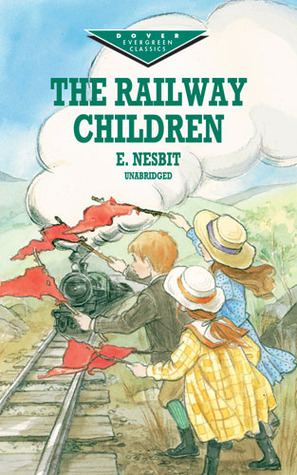[button color=”black” size=”big” link=”http://affiliates.abebooks.com/c/99844/77798/2029?u=http%3A%2F%2Fwww.abebooks.com%2Fservlet%2FSearchResults%3Fisbn%3D9781421839455″ target=”blank” ]Purchase here[/button]
Famous for her happy-go-lucky tales of children having magical adventures, Edith Nesbit proved in this book that she could write an equally engaging story about a family coping with serious trouble. At first Roberta (better known as Bobbie), Peter, and Phyllis are as well off as the children in The Phoenix and the Carpet, etc. But then their father is mysteriously taken away from them, and their mother moves them to a little cottage in the countryside where they have no school and no friends and nothing to do except mess around in the garden, look at barges on the canal, and wave at passing trains. Meanwhile, they have to get by without servants (gasp!) and manage on a lot less money, as Mother is forced to make a living selling stories.
The children make the most of it in a series of charming adventures, and by their honesty and courage and playfulness and kindness they work their way into the hearts of everyone in the village — particularly the doctor, the railway station-master and porter, and an old gentleman who waves back from his train every day. They learn from their mistakes, they make up after all their quarrels, and they blunderingly and good-naturedly teach lessons in loving-kindness to their olders and betters.
And what adventures they have! Bobbie accidentally gets swept away on a train when she only meant to get the driver’s attention… the children help a lost and confused foreigner find his way… they prevent a railway accident, and save a boy who gets hurt in the railway tunnel… they save a child from a fire… they help make a proud (but poor) man’s birthday a happy one… and Bobbie, finally, helps unravel the mystery behind their father’s long absence.
Of the several groups of children Nesbit created, it’s hard to say which group is the nicest. It is a pleasure getting to know every one of them. But in this comparatively serious book (it stops short of being too sentimental) you get to know and admire Bobbie, Pete, and Phil like none of the other Nesbit children. Perhaps the serious tone may account for this being one of her less popular books. But there is so much here to love, for those who are open to it!
If you are fascinated with trains, or know someone who is, I especially recommend this book.





